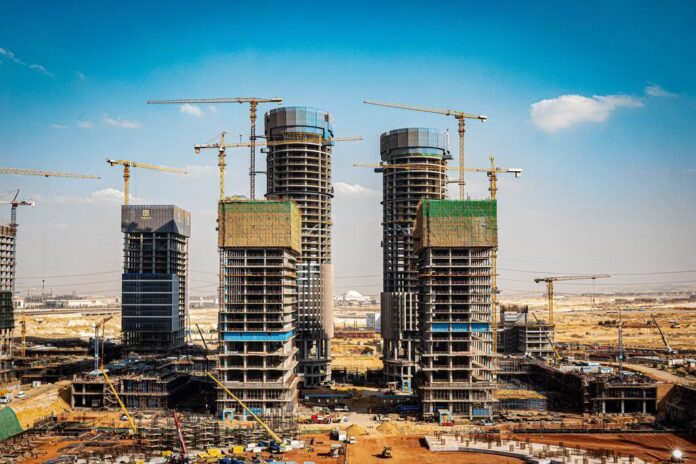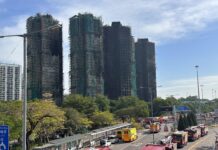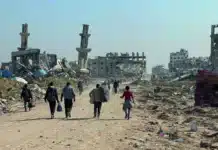Dikang, chinaworker.info
China’s property market is now in its second year of deep slump. This is the most serious of all the serious economic problems facing the CCP dictatorship today. Why is this the case?
It is because investment in the property sector has been the “engine room” of the CCP’s state capitalist development model for more than 20 years. The property sector accounted for 28 percent of China’s GDP throughout this period (even higher according to some estimates). This is a far bigger share than in any other economy. The US property sector’s share is around 17 percent of GDP and in Japan, 12 percent.
The CCP allowed the biggest financial bubble in world history to inflate, because for many years this seemed to guarantee relatively strong GDP growth – and it made a lot of people very rich. The property bubble has now burst, causing a chain reaction that is likely to weigh down on the Chinese economy for many years. That’s what happened in Japan after its property bubble burst in 1990, which led to three “lost decades” of very weak, “zombie” growth. Marxists and ISA have warned for many years that the “Japanese disease” would eventually also hit China’s economy. This has now materialized.
When the property crisis first emerged with the debt problems of Evergrande in mid-2021, our articles explained this was only the “tip of the iceberg”. Over a year ago, chinaworker.info wrote that this was a “turning point” for China. We said that the government and the capitalists didn’t understand the full scale of the disaster. This is still the case although some are waking up.
We need to identify the main cause of the crisis. The Evergrande affair was about the liquidity or “cash flow” problems of some of the biggest property companies. These capitalists built-up huge and unsustainable debt loads through a reckless strategy of financial speculation: They borrowed large sums from banks and financial markets to buy land and then used this land as security to obtain more loans.
In addition, the capitalists borrowed from homebuyers. In 2021, 90 percent of new properties were sold on the pre-sale model: the buyer had to give the developer the money before the house was built – a big source of interest-free financing for the capitalists.
The whole CCP system became embedded in this unsustainable and fraudulent sector of the economy, from the local and provincial governments that sell land, to the property companies with CCP links, to the CCP-run banks that have pumped up the bubble with crazy amounts of credit. This was a type of ‘Ponzi scheme’ on a giant scale. A Ponzi scheme needs to continually lure new “investors” to buy in. When these sources dry up the Ponzi scheme collapses.
The main cause of China’s property slump is that the market has reached its limits, there are no longer enough buyers to keep the Ponzi scheme ticking along. This reveals one of the contradictions of capitalism, a contradiction that the CCP dictatorship possibly believes it can make disappear with some clever financial magic – but it can’t.
A crisis of overproduction has arisen which is endemic in the unplanned and anarchic nature of capitalism. This overproduction is very clear in China’s property sector. The South China Morning Post (14 August, 2022) reported there are 30 million unsold apartments, with around 100 million more that are sold but unoccupied.
The population crisis reinforces these trends. Most third, fourth, and fifth-tier cities have stopped growing or are suffering population declines. The population of Harbin, Heilongjiang’s capital, fell below 10 million in 2021. This means there are now no cities of more than 10 million people in the whole of northeast China. Nationally, 266 cities saw their population fall between 2010 and 2020, according to researchers at Tsinghua University.
In addition, speculation has been the main driver of growth in the housing market for many years. This led to even more extreme overproduction because it hid the underlying weakness of the market, limited real demand. Since 2018, only 30 percent of houses sold have gone to people wanting to live in them, according to JPMorgan. Seven out of ten house sales were to people who already owned a home. Totally during this 4-year period, around 52 million units were sold, so that means only 15.6 million units were used as homes, while 36.4 million were bought as a financial investment, i.e. for speculation. It is widely known that huge numbers of CCP officials have been collecting properties for speculation purposes.
Looking back at the Evergrande crisis we can clearly see it was a symptom rather than the cause of the property crisis. As we said at the time it was just the “tip of the iceberg” of a much bigger problem. The problem for Xi Jinping’s regime is that the bubble will continue to deflate (falling house sales, falling housing starts, falling land sales, larger inventory of unsold homes, more property companies and even local governments going bankrupt). This can go on for quite some time before capitalism can create the conditions for a new upturn in the property market.
The CCP will attempt to intervene in this process using bureaucratic levers (state-owned enterprises, local governments, state-owned banks) but these methods are less and less effective and just create more debt. In the first half of 2022, local government financing vehicles (LGFVs) accounted for 25 percent of all land purchases, up from 9.2 percent in the first half of 2021. So local governments are increasingly selling land to themselves. How? By making their LGFVs take on more debt. China’s combined debt (government, private, corporate) is already over 300 percent of GDP and threatens a banking crisis, which in turn could unseat the CCP from power.
Whatever the future brings it is likely that China’s GDP growth rate will never again reach the heights of the past two decades. A prolonged phase of slow growth is ahead which can cause revolutionary convulsions.




